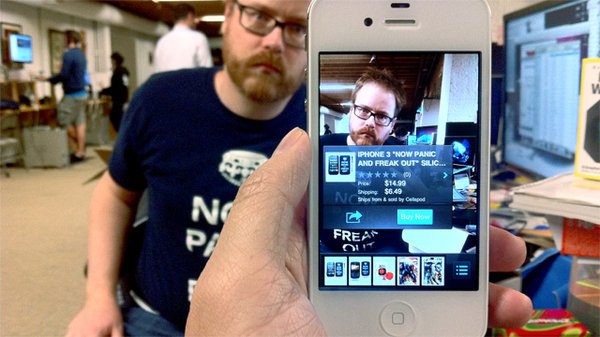
Augmented reality (AR) is nothing so new – marketers have been hypothesizing about the experiential potential of augmented reality since the early days of the iPhone in 2008/2009. But it wasn’t until Google Goggles surfaced a few years later that we began thinking seriously about the search implications.
The initial execution of Google Goggles failed to recognize objects more often than not but it was easy to see the possibilities of a search model in which all you had to do was look at an object.
The Goggles model had plenty of obvious benefits, not the least of which was the ability to get immediate info about an unfamiliar object. Don’t know what something is called and can’t do a keyword search? Just Goggle it!
There was also the appeal of greatly enhanced ease of use. Why waste precious time typing in query? Not to mention those unique moments in which voice search isn’t an option because you don’t want to actually say out loud what you’re searching for.
Now Goggles has morphed into Google Glass and the execution has come a long way, even if the uptake is still selective. But for all Google’s early investment and evangelism of the visual search model, it looks like Amazon will make it an everyday thing.
All About Flow
Flow has actually be around since mid-2012 so it’s not exactly new. However, Amazon has bundled Flow’s functionality into the main Amazon app, which is where the fun will begin.
The integration and usability are quite simple; users now have three discovery choices within the Amazon app: keyword search, barcode scan, and Flow.
Simply frame up an object in your device’s viewfinder and Flow goes to work recognizing it. Within seconds (in most cases) you are presented with purchase options for that exact object and/or similar objects within the Amazon marketplace.

The overall functionality of the Flow option is quite the same as in the original app and its ability to recognize objects has much improved since the initial release in 2011.
Now that Flow has been integrated into the main iOS app (availability on other platforms is pending) with a direct link to one-click purchase, the awareness and, eventually, mass uptake, of visual search is sure to increase.
Amazon’s Visual Search Competition?
Amazon Flow isn’t the only visual search game in town. EBay’s Red Laser app still limits users to QR and barcode scans but it’s hard to imagine that more sophisticated forms of visual search are not in the works.
The current eBay Fashion app has an image swatch feature that matches products within the marketplace to a photograph but it’s more of recommendation functionality and lacks the immediate scan-to-purchase appeal the Amazon Flow now offers. Still, it’s almost a given that eBay is perfecting something competitive.
As eBay continues to move further away from its roots as an auctioneer, emerging as a true retail showcase, it will be pouring more R&D dollars into creating seamless search-and-shop experiences.
Meanwhile, Goggles has come a long way in performance but its recommendations are less specific and the path to an eventual purchase more complex. It doesn’t have benefit of tapping a vast repository of product info and imagery in the same way as Amazon, and to an extent, eBay. Yet with Google’s deep pockets, it’s a given that it too has engineers toiling behind closed doors to perfect the art of visual search and shopping.
At this point, it looks like a retail battle royale will evolve between Amazon and eBay to own modern e-commerce – or any commerce for that matter.
As visual search becomes a more common user behavior and immediate delivery options become more available, it’s likely that users will begin to gravitate towards one of these big two to actually make purchases, driving traffic away from branded retail apps. Which doesn’t necessarily mean that branded retail apps will go away – their important is likely to increase as a conduit for brand awareness and loyalty via in-store experiences like iBeacon.
Google has the potential to add an interesting dimension between the two if it can bring to the table overall competitive product results across both retail giants as well as capturing niche markets that neither covers.
The Coming Search Shift: From Words to Images
Whatever the outcome though, our search habits are set to change quite drastically from a dependence on words to a reliance on images and with those changing behaviors, the way we think about SEO and SEM will undergo the biggest shift yet.
Image credit: Tested

